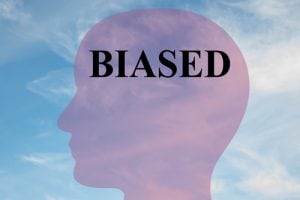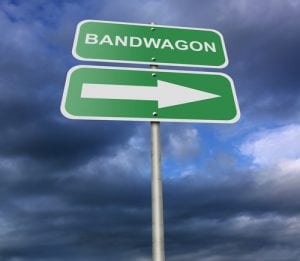How can we influence the decision making process
First, you might think that a potential customer’s decision making process is private and that you can’t do much to influence it. You’d be wrong. In fact, human beings make decisions every day, and when they do, they are under the influence of dozens of mental glitches.
Once you know what those glitches are, you can use them to hack your customers’ minds and get them to make the decision you want them to make. Here’s how.
The Role Psychology Plans in Purchasing Decisions
Above all, psychology plays a role in everything we do, from choosing our friends to buying toothpaste. We may not always be aware of it, but our brains work overtime to influence our decisions.

For instance, two Israeli psychologists, Daniel Kahneman and Amos Tversky, were responsible for laying out much of the groundwork that contributed to today’s sophisticated marketing techniques. They did it by identifying and exploring some of the tricks our brains play on us.
Potential customer’s decision making process is driven by Fear, Uncertainty, and Doubt
The first thing you need to know about marketing and psychology is that the old marketing adage of using fear, uncertainty, and doubt . Furthermore this is abbreviated as FUD, and it still works. Let’s talk about why that is.
Above all, the human brain is a complex organ. While we have capabilities for complex thought that many animals do not, our brains still have many commonalities with theirs.
One of those commonalities is the limbic system, also sometimes referred to as the lizard brain. It’s the most primitive part of our brain and it plays a significant role in our or our potential customers decision making process. How to brand and market your products.
More importantly, the limbic system’s primary function is survival. More so if you inject a little bit of fear into your marketing, you can wake the limbic system up. Systematically calm it down again by giving it what it wants.
Cognitive Biases in customer’s decision making process
Some of the most important work done by Kahneman and Tversky was in identifying two things: heuristics and cognitive biases.
First, a heuristic is a mental rule of thumb. When we make evaluations of things, we almost always compare them to a hypothetical ideal. Furthermore, the heuristics identified by Kahneman and Tversky include anchoring, representativeness, and simulation.
Importantly, a cognitive bias is a mental glitch or short cut. Like our brains are always looking for short cuts, and cognitive biases allow us to make them quickly and easily. However, they also sometimes get us to do things that might be detrimental because we skip over some of the finer details.

One of the most surprising things about cognitive biases is that you can be aware of them and still fall victim to them. They are incredibly powerful tools to have in your marketing toolbox.
How to Use Cognitive Biases in Marketing and influencing potential customers decision.
Now let’s talk about some of the cognitive biases you can use in marketing. We’ll talk about seven of the most common and share some information about each.
1. Anchoring
Anchoring is technically a heuristic, but it’s incredibly helpful in the world of marketing. Basically, anchoring says that if you provide people with an anchor. For instance, a piece of information to hold onto then they’ll use it as a measuring stick for everything that follows.
The classic example of anchoring comes from television infomercials. You’ve probably seen them, and nearly all of them start off by telling you how much the product being sold is worth.
They ask, “How much would you expect to pay for all this?” Then they give you a price. That price is nowhere near what they’re charging, but what they’re trying to do is anchor you to a particular value so that by the time they reveal what you’ll have to pay, it seems like a bargain.
You can use this technique in your marketing without being quite so obvious about it. For example, you might list a product or service at a particular price by saying, “A $100 value, selling now for just $49.99!”
A statement like that has the same effect as the infomercial technique, but without seeming so aggressively salesy.
2. Reciprocity
The reciprocity bias is one that you have undoubtedly experienced in your life at some point. If you’ve ever received a compliment and felt a knee-jerk obligation to pay a compliment in return, then you’ve been the victim of this cognitive bias.
It’s not a bad thing to want to reciprocate, but it can be if, for example, you feel obligated to spend time with someone you don’t like or to buy a gift that you can’t afford just because you received one. But how can you use it in marketing?
One way marketers use reciprocity is by offering a free gift such as a template or eBook to people to get them to fill out a lead for or subscribe to their list. Other examples include giving out free samples, buy one/get one offers, and bonus gifts.
3. The Bandwagon Effect
Next up is the bandwagon effect. This bias was first identified in political campaigns, and it described a sort of crowd mentality – the desire to be on the winning side. Jumping on the bandwagon is now a commonly-used phrase to describe sports fans, but it can be useful in marketing too.

One example of the bandwagon effect comes from McDonald’s. Have you ever noticed that they tout the number of people they’ve served in their years in business? Given how long they’ve been around and how many restaurants they have, it’s an impressive number – one that makes it seem like everybody in the world eats at McDonald’s.
You can use this effect by underlining how popular your product is and urging customers not to get left behind.
4. Priming
Priming is a psychological phenomenon that says that exposure to a stimulus can trigger a response to a later stimulus. In other words, we are more likely to take Action B if we have had exposure to Stimulus A beforehand.
One famous example had to do with wine sales. A liquor store alternated playing French and German music and made note of the wine sales. More people bought French wine when they heard French music, and more people bought German wine when they heard German music.
In other words, the previous association created a later action. You can use priming by subtly introducing ideas and influences – on your blog or in a social media post, for example – and then following up with a carefully constructed call to action. Use this technique when you sell digital art on Behance or other platforms.
5. The Decoy Effect
The decoy effect shows that you can convince consumers to choose a particular option or package by the way you price the options in question.
The most famous example had to do with pricing newspaper subscriptions. The publication in question wanted to steer people to buy a combination print/digital subscription. They succeeded by pricing the standalone print subscription at the same price as the combination.
When customers saw the combination, they viewed it as a better deal because they assumed that its worth was the print price plus the digital price and assumed they were getting the digital version for free.
You can use the decoy effect by creating pricing designed to steer customers to the most profitable package.
6. Scarcity – and potential customer’s decision making process.
You’re familiar with the law of supply and demand. When a particular product is not readily available, the prices go up. Scarcity demonstrates how to use that to your advantage.
Simply put, scarcity shows us that people are more likely to purchase an item when they believe it is in short supply. It triggers their fear of missing out (FOMO) and spurs them to take action.
Television shopping networks use this technique all the time by showing how many items they have available and broadcasting a running total of how many items are left for purchase.
You can use scarcity by offering a deal for a limited time only, or limiting production runs. Another example is the way Disney routinely pulls some of their movies off the market and puts them back in the vault. Why not do something similar with your products?
7. Loss Aversion
Loss aversion is exactly what it sounds like. People are more likely to hold onto something they already have than they are to acquire something new.
That might sound like the opposite of a marketing technique, but you can actually use it to your advantage. For example, you might offer a free trial period of your product if it’s a subscription service.
Alternatively, you might frame your marketing so that people feel that they’re losing something by not buying your product.
Conclusion
These seven cognitive biases can help you hack your target audience’s brains and get them buy your product or service. The key is to use these tools sparingly and with subtlety. You don’t want to hit a prospect over the head with them. Rather, your goal should be to gently steer them toward the decision you want them to make, all the while letting them believe it was their idea in the first place. We know how. Contact Us
